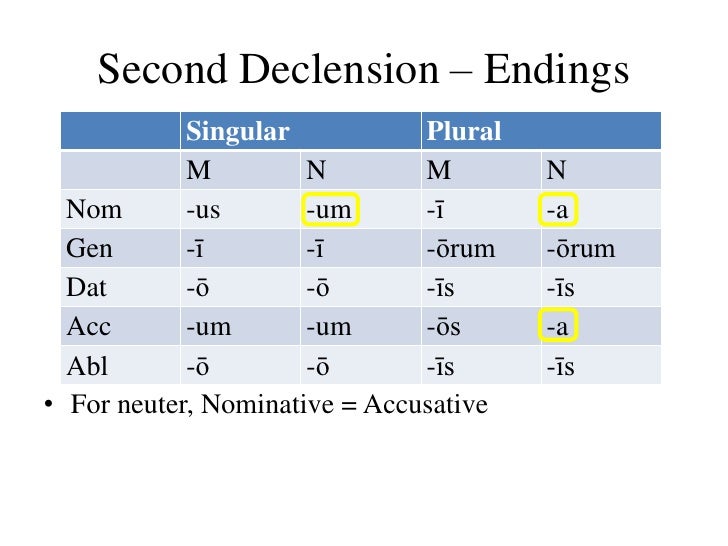

The countries that use the reformed order for Latin also tend to use it for Greek and German. | N-G-D-Ac-V-Abl | Antiquity | USA, Italy, Greece, | but I suspect it's because Harm Pinkster is from the Netherlands.

Pinkster 2015 ( The Oxford Latin syntax) still uses the old order, Nom. Weiss 2009 (2nd corrected printing 2011), following the Indian system with some modifications, adopts a slightly different order though in his Outline of the historical and comparative grammar of Latin (and so does Sihler 1995): So, the following order seems to be prevalent now in present-day Latin research (published in English, German, or French):

Morphologie historique du latin by Alfred Ernout, 3rd ed. In French linguistics, the following order seems to be common now: In Russian linguistic research, the following order is the most common one: Nom - Gen - Dat - Acc - Abl - Voc. Ausfürliche Grammatik by Kühner and Holzweissig (1912): For example, the best Latin grammar in German (and it surely beats any Latin grammar written in English or French, imho), Lateinische Grammatik by Leumann, Hofmann and Szantyr (the last edition was published in 1977, edited by Manu Leumann) uses the following order of the cases in Latin:Ĭf. It is not quite correct to say that in German linguistics the canonical order is NGDA that is used to describe Latin declension paradigms. This caught on - via Kennedy, who used several grammars, including the one written by Madvig. Later, the Danish classical philologist (and politician) Johan Nicolai Madvig (1804-1886) adopted this case order in his Latin grammar.
Nom-Voc-Acc-Gen-Dat (by the Danish scholar N.L. Nom-Voc-Dat-Acc-Abl-Gen in Versuch einer an der menschlichen Sprache abgebildeten Vernunftlehre (1781) by the German language teacher and grammarian Johann Werner Meiner (1723-1789) (Bernd Naumann describes this work as "a philosophical grammar which was the result of his life-long experience as a language teacher and thus better than most contemporary works on this subject" - see the entry on Meiner in Lexicon grammaticorum: Who's who in the history of world linguistics). His rationale was that the neuter forms were "the simplest" (hence the Nom-Voc-Acc block) thus, he gives the declension paradigms in the order neuter-masculine-feminine.Īllen and Brink do mention some earlier historical evidence from the eighteenth century though: Nom-Voc-Acc-Dat-Abl-Gen, goes back to the Danish historical linguist Rasmus Rask (1787-1832). to the accusative, advances by means of the dative, which shows the relation "in a place." For this reason, the dative has been placed before the accusative.Īllen and Brink 1980 write that another tradition, i.e. The relation "from a place" which comes to be from the genitive to a place, i.e. The genitive and dative cases seem somewhat similar to the immobile ground. a dancer cannot turn around if he does not place his foot upon the ground, which is immobile), and it is clear in the case of someone who is moved from one place to another that, first, he comes to be in a place, and thereby does he come to a place. It is the case that everything moved desires to be moved around something immobile (e.g. There are three local relations: from a place, in a place, and to a place, which respectively are proper to the genitive, dative, and accusative cases. 54).Įnglish translation (kindly translated by brianpck) remonte très certement aux Stoiciens" (p. Jean Lallot (in Lallot 1985) argues this canonical order of the cases "certainly goes back to the Stoics" - cf. 65 The old order and the new: A case history (btw I strongly recommend this paper - imho it's the best summary of all relevant research on this question written in English):Ĭf. Dionysius Thrax (170-90 BCE) is considered to be the first extant record of this system - see a screenshot from Allen and Brink 1980, p. The Greek - and hence Roman - tradition is to list cases in the order: NOM - GEN etc.







 0 kommentar(er)
0 kommentar(er)
